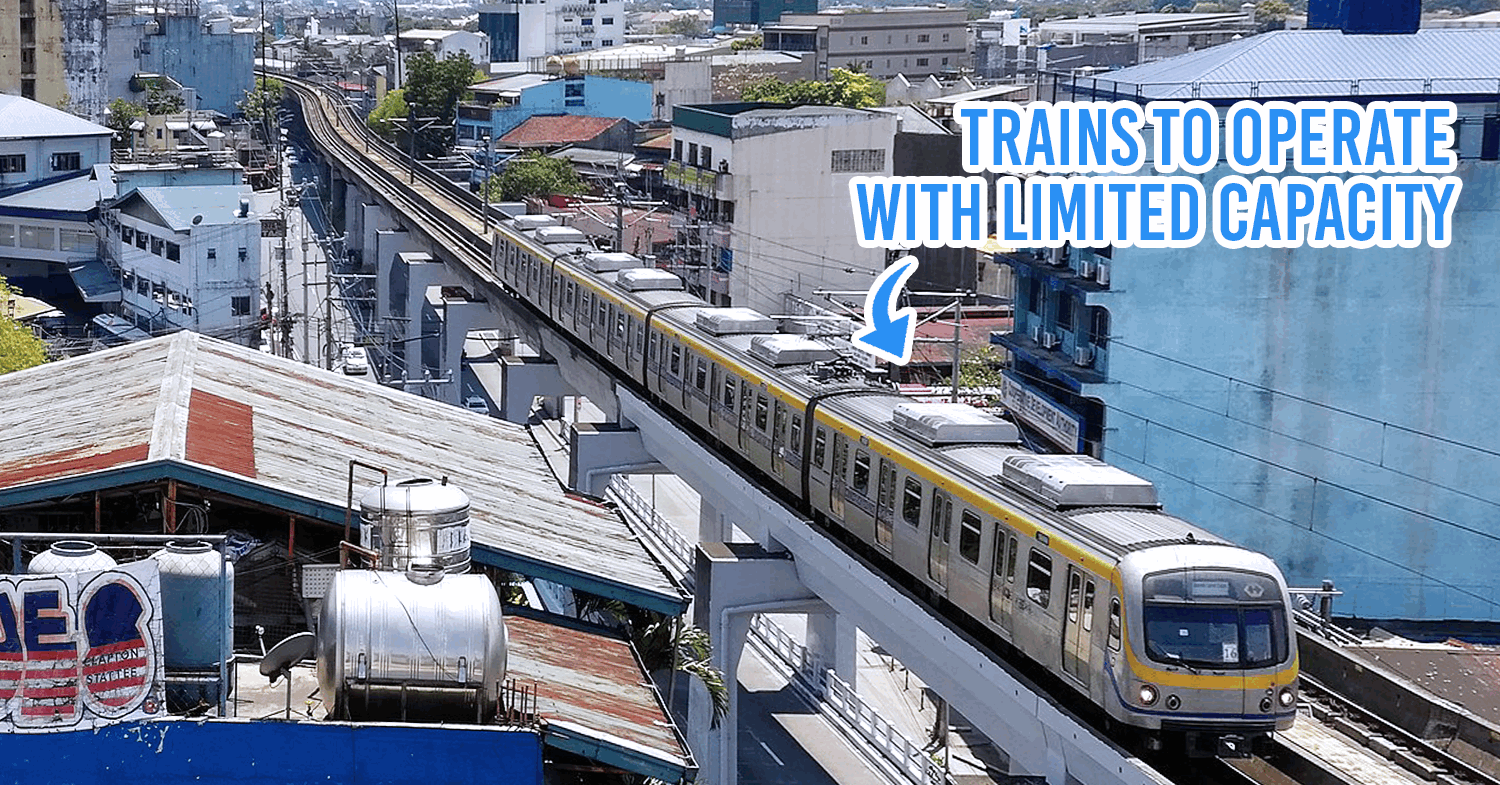Public transportation and domestic flights to resume under GCQ
After two months of enhanced and modified community quarantines in the Philippines, public transportation and domestic flights in areas placed under General Community Quarantine (GCQ) on May 28 will now resume operations beginning June 1st.
The Department of Transportation will be opening public transportation in two phases. For phase 1, which will be implemented from June 1st to 21st, trains and buses, taxis, transport network vehicle services (TNVS), shuttle services, point-to-point buses, and bicycles will be allowed to operate with limited passenger capacity.
Phases 1 and 2 of public transportation resuming operations
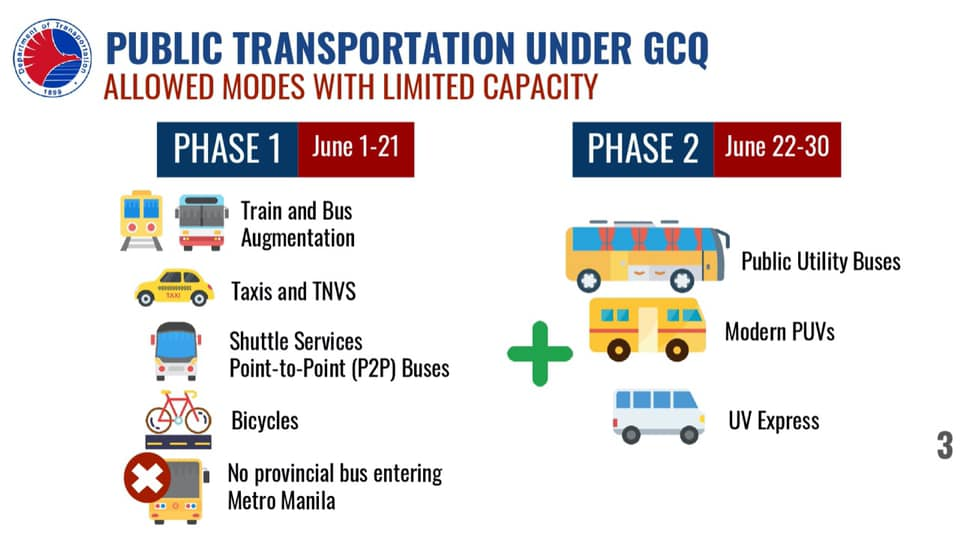
Image credit: Department of Transportation – Philippines
Areas placed under GCQ from June 1st to June 15th are Metro Manila, Cagayan Valley, Central Luzon, Calabarzon, Albay, Davao City, and Pangasinan. These places are where the following changes will first apply.
LRT and MRT lines will operate 10% to 12% of their regular capacity, while Philippine National Railway (PNR) will operate at 35%. To allow people to commute along their usual train routes and free up the capacity of train stations, a bus service will follow train routes, with 300-500 buses to be deployed on the midlane of EDSA.
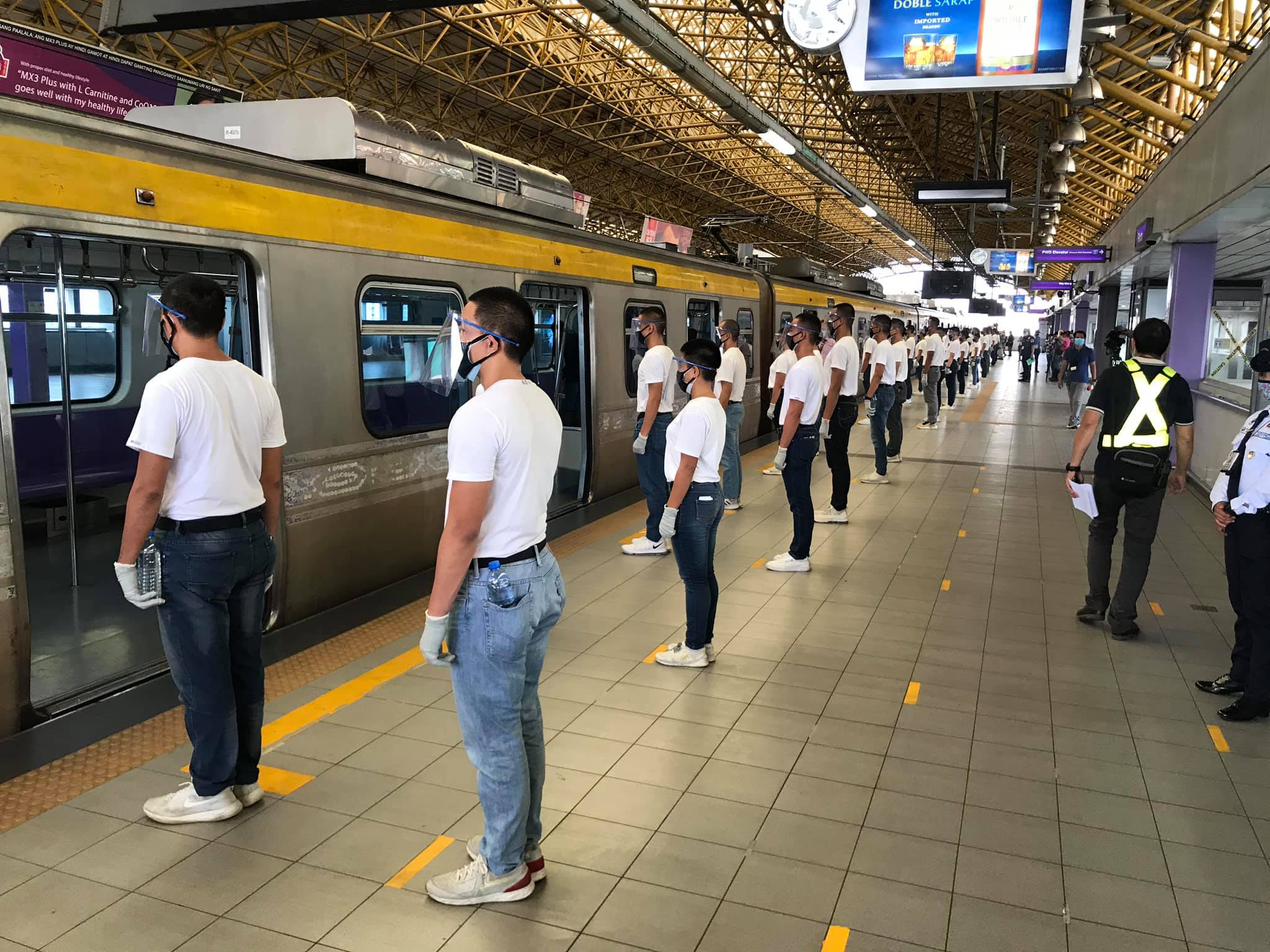 Image credit: Rex Remitio
Image credit: Rex Remitio
Tricycle drivers will now be also allowed to resume their source of income, subject to the approval of their local government units (LGU). Provincial buses though still cannot enter Metro Manila.
Under phase 2, which shall take place from June 22nd to June 30th if Metro Manila continues to be under GCQ after June 15th, public utility buses, modern jeepneys, and UV express vans will be allowed to accommodate passengers again.
Traditional jeepneys, however, will still be barred – DILG Secretary Eduardo Año noted that old jeepneys might be turned into delivery vehicles instead.
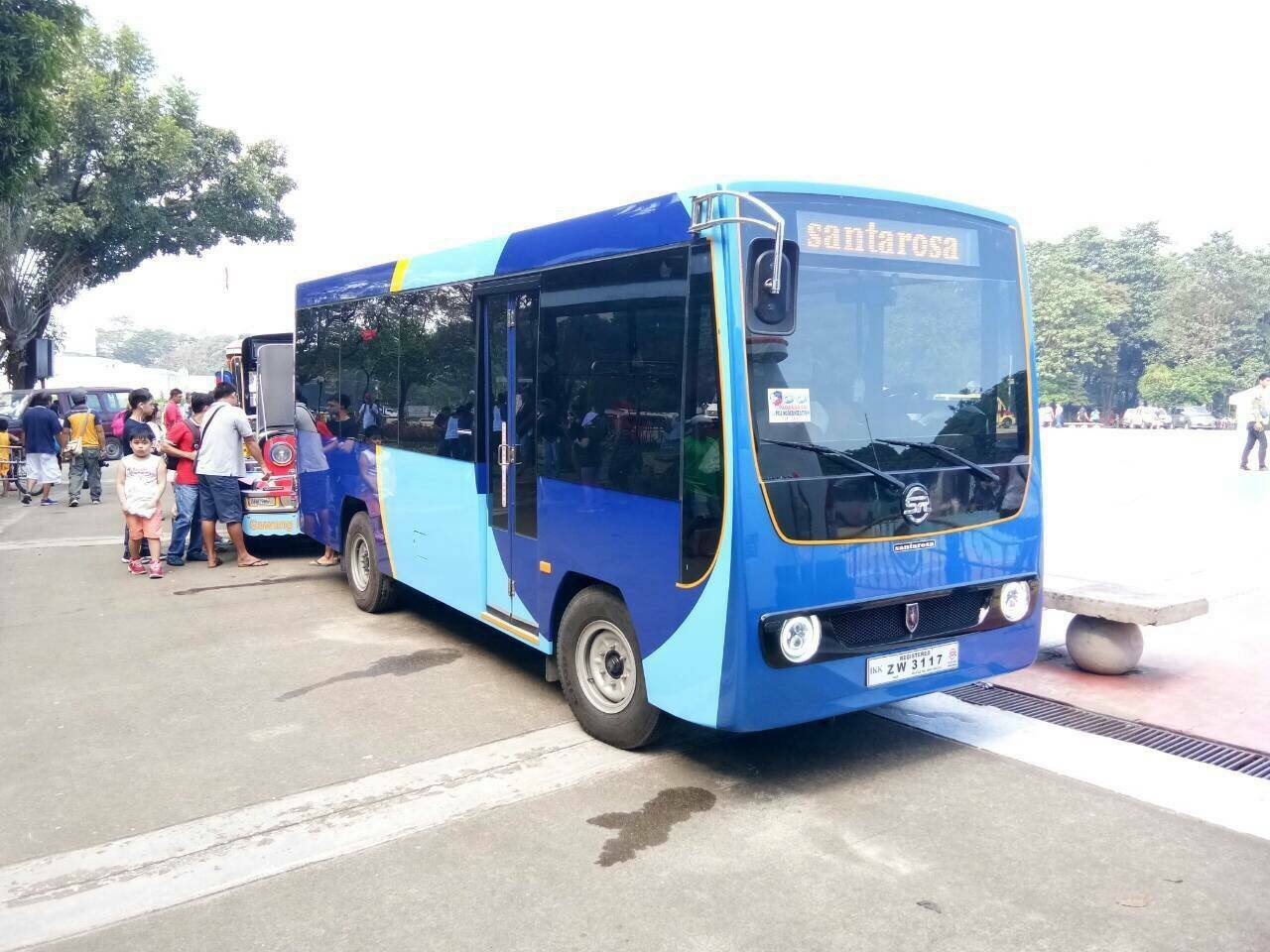
Modern jeepneys
Image credit: Wikimedia Commons
Meanwhile, commercial domestic air travel will now also be allowed between GCQ to GCQ areas.
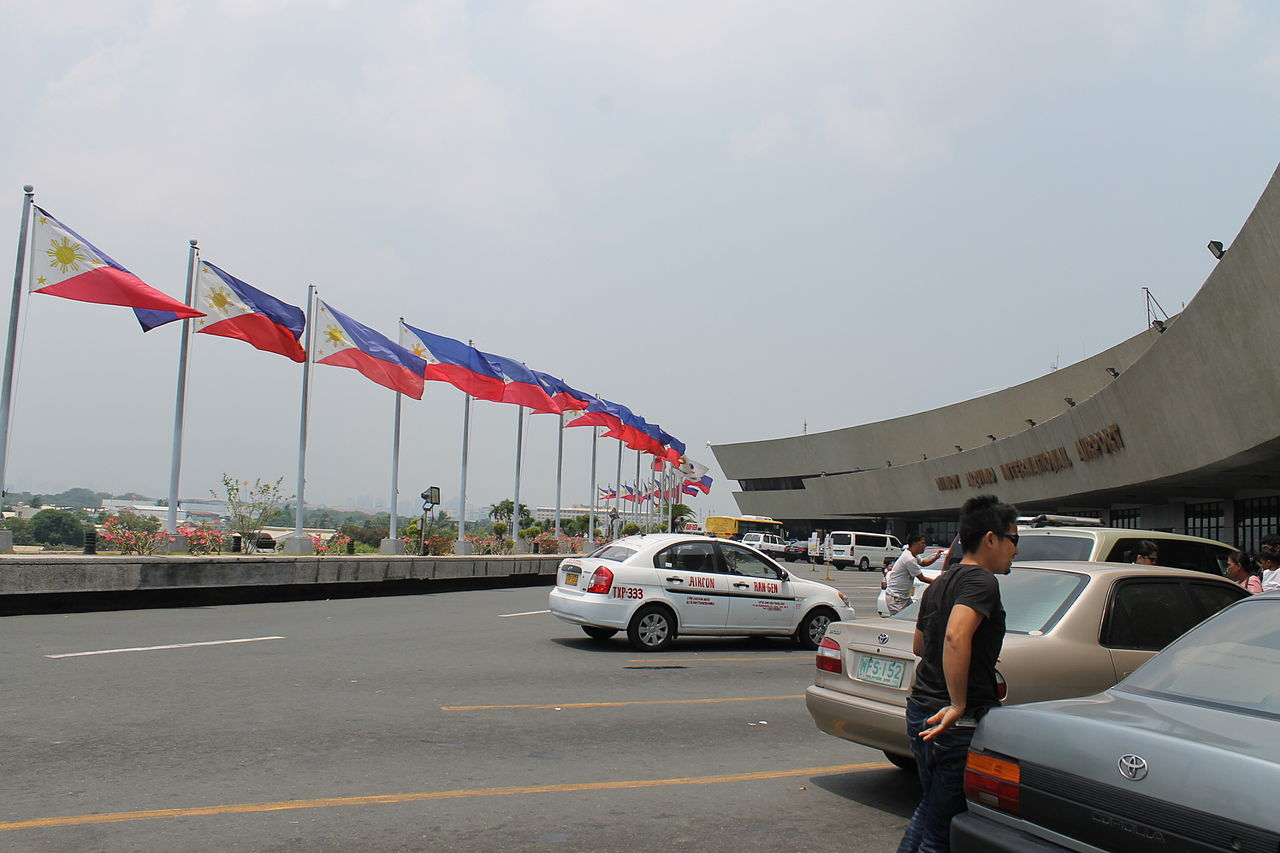 Image credit: Wikimedia Commons
Image credit: Wikimedia Commons
Social distancing and sanitary measures
A 1-meter social distancing rule between persons will be reinforced inside all mass transport units and PUVs. Metro Manila Police recently conducted a commuting drill to show how social distancing will look like in train stations.
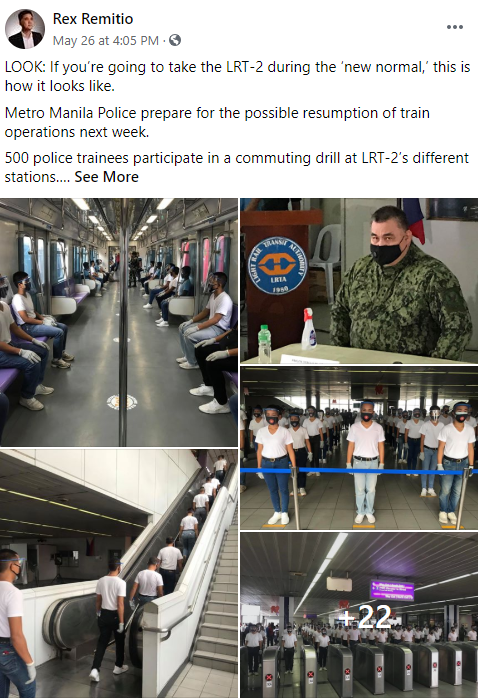
Image credit: Rex Remitio
Passengers will have to follow sanitary measures such as wearing face masks at all times, cashless payments, use of thermal scanners, alcohol and sanitizers in Public Utility Vehicles (PUVs), disinfection of high-touch surfaces of vehicles, disinfection facilities, and contact tracing.
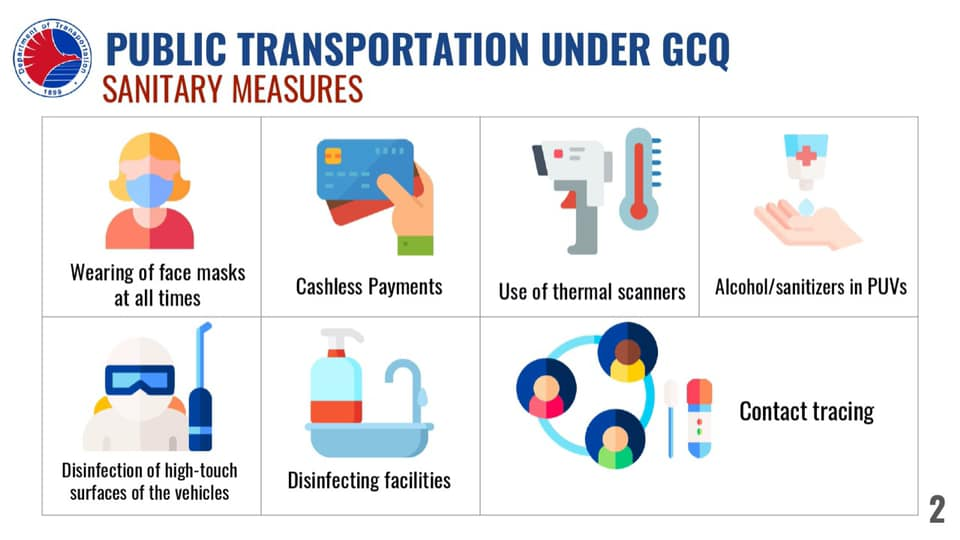
Image credit: Department of Transportation – Philippines
Experts’ warnings on easing quarantine measures
Some experts are not keen on the easing of quarantine measures, calling it “premature” based on various data they have considered such as the current rate of viral spread.
DOH however explained that part of the recent rise in COVID-19 cases was due to the validation of days-old positive test results. Health Secretary Francisco Duque III assured that the country’s healthcare system is not overwhelmed by the pandemic, citing that “our health systems capacity is sufficient. We have 60% reserve capacity in terms of ventilators, ICU (intensive care unit) beds, and isolation beds.”
GCQ beginning June 1st
As quarantine restrictions are eased beginning June 1st, it sadly doesn’t mean that we can now go back to our usual routine, especially when using public transportation.
Let’s all be strict in following social and sanitary measures as we slowly go back to work under the General Community Quarantine.
Also check out:
- Cebu Pacific introduces contactless flight guidelines
- Student compiles COVID-19 travel precaution list
Cover image adapted from: Wolfgang Hägele/Wikimedia Commons
